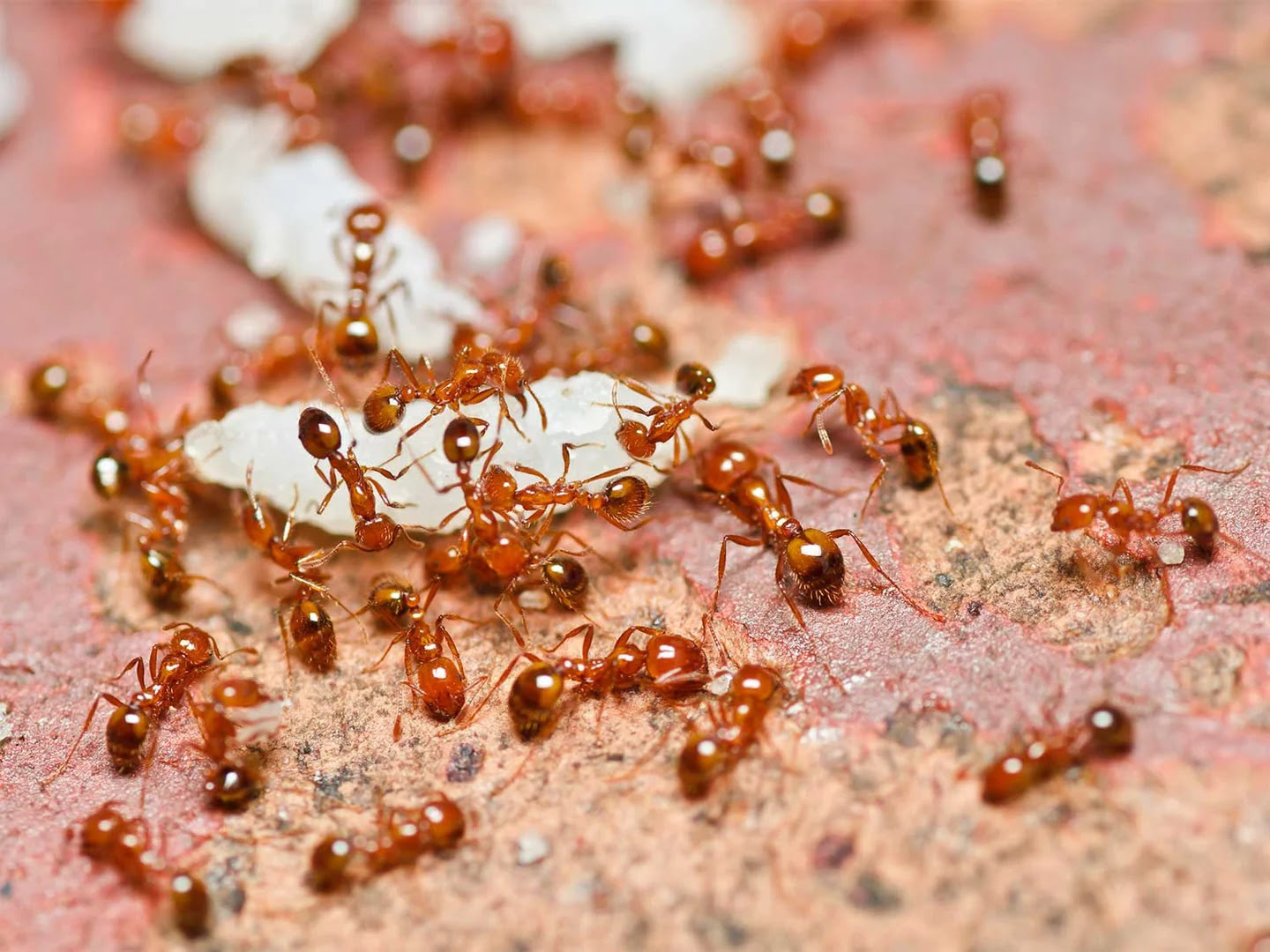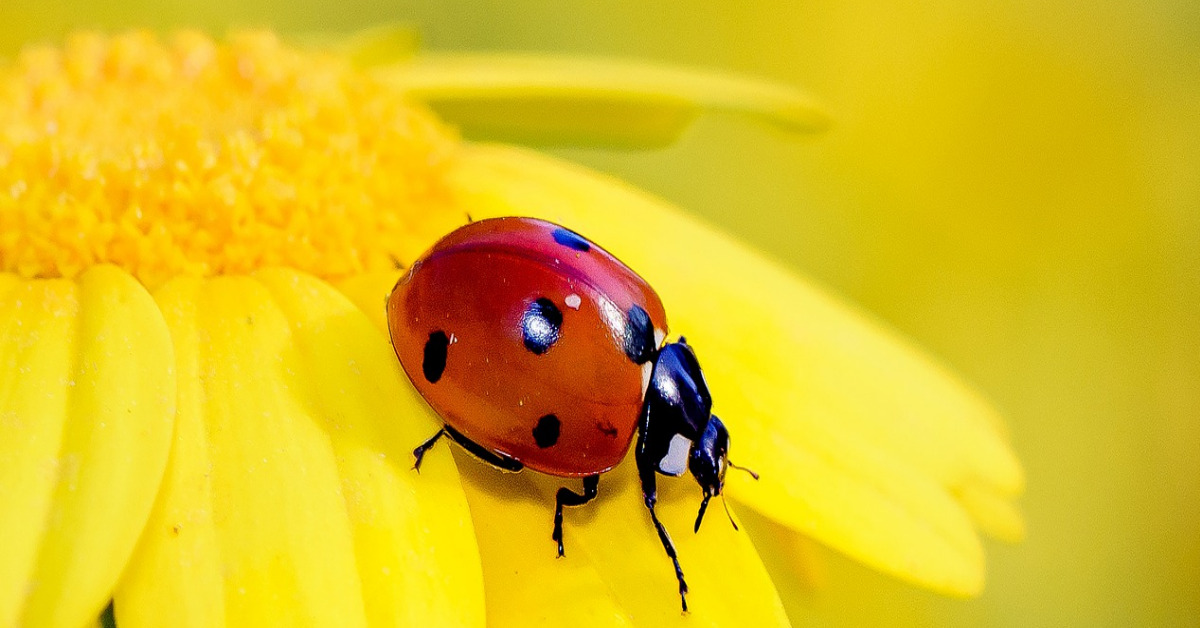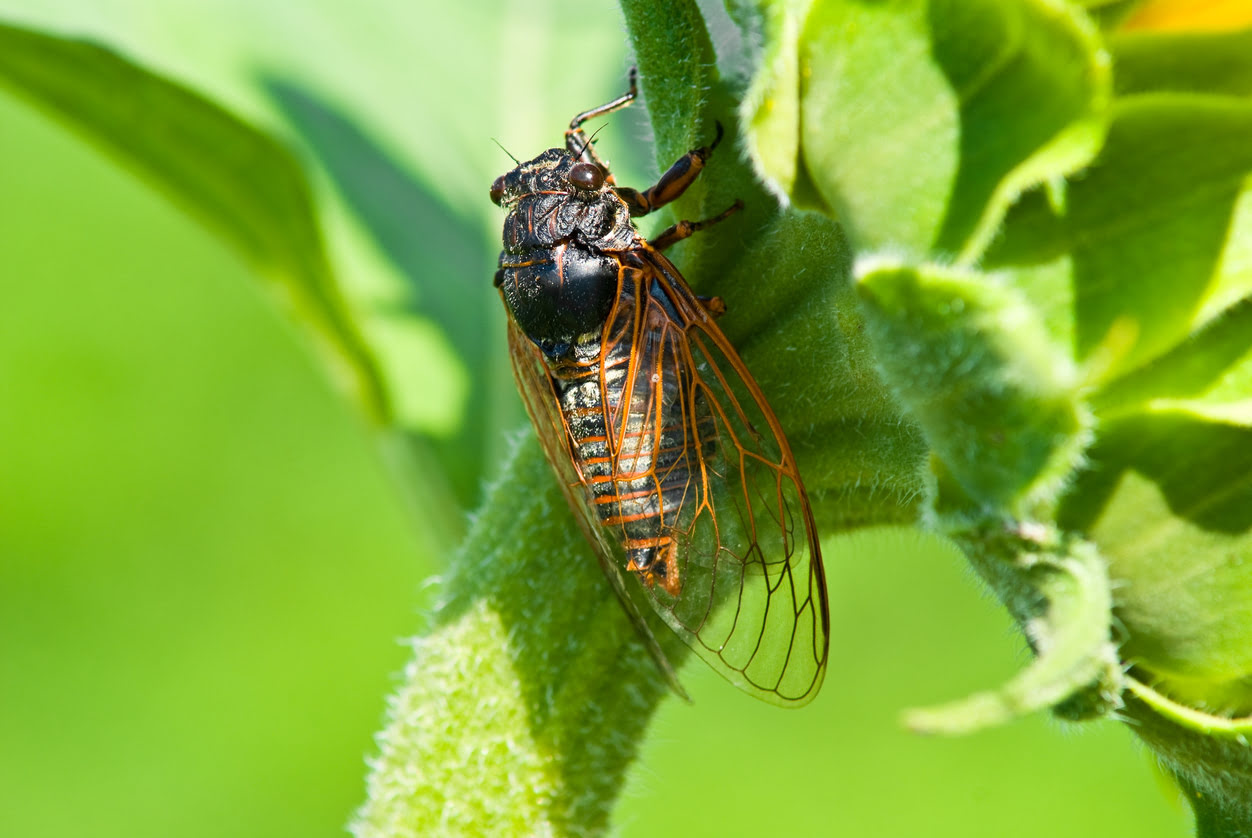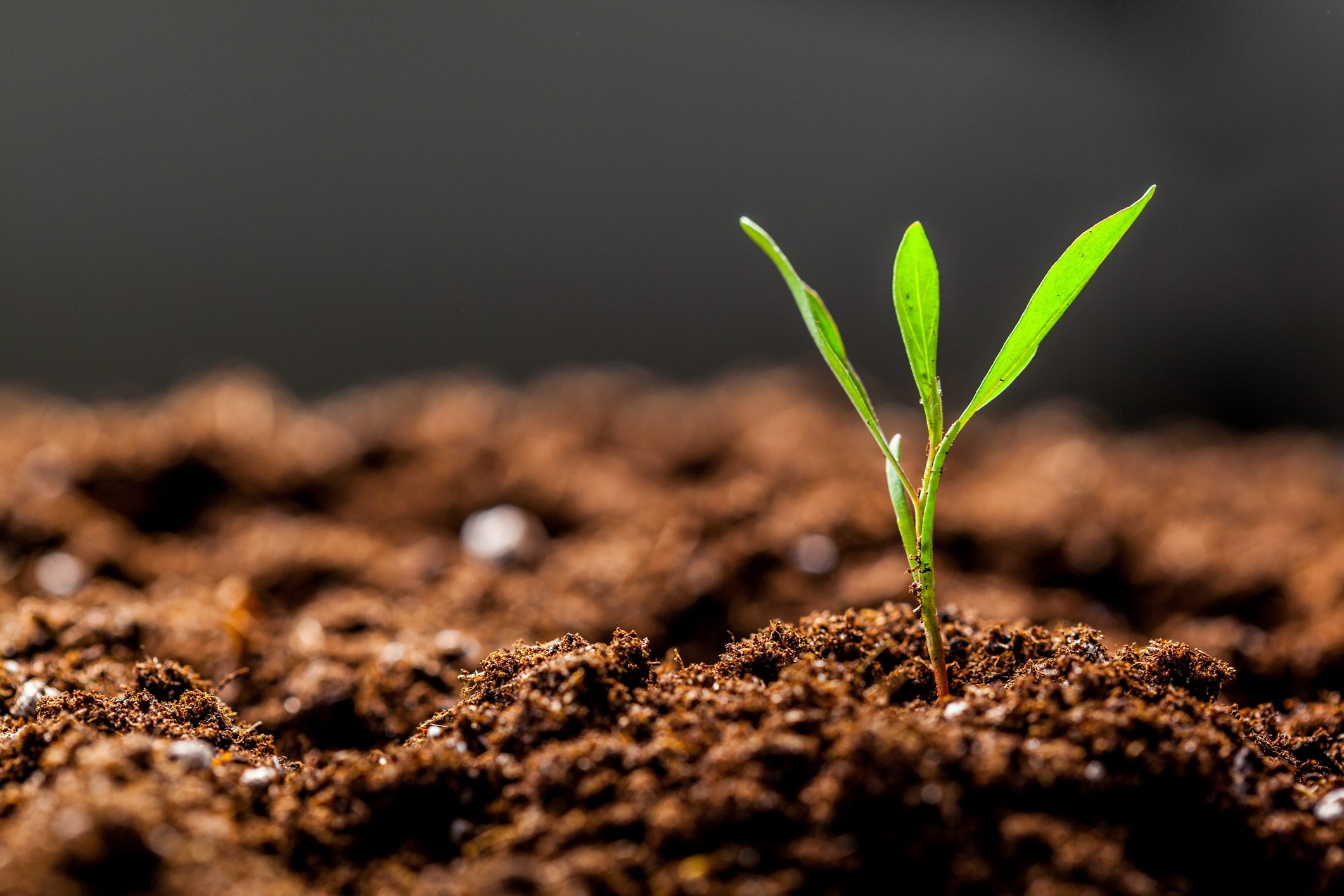Home>Gardening News and Trends>Latest News>Which Term Best Describes All Of The Different Species Of Insects Living In A Rainforest?


Latest News
Which Term Best Describes All Of The Different Species Of Insects Living In A Rainforest?
Modified: January 22, 2024
Discover the Latest News on the Various Species of Insects Thriving in Rainforest Ecosystems
(Many of the links in this article redirect to a specific reviewed product. Your purchase of these products through affiliate links helps to generate commission for Chicagolandgardening.com, at no extra cost. Learn more)
Table of Contents
Introduction
Rainforests are incredibly diverse ecosystems that are home to millions of different plant and animal species. One of the most fascinating aspects of rainforests is the richness of insect life they support. In fact, insects make up the majority of species found in rainforests, playing vital roles in various ecological processes.
In addition to their astonishing species diversity, rainforests are also known for their crucial environmental functions. They help regulate the global climate by absorbing large amounts of carbon dioxide and producing oxygen. Rainforests also provide a habitat for countless organisms, including insects.
Insects, despite their small size, play a significant role in maintaining the balance of the rainforest ecosystem. They are involved in essential processes such as pollination, decomposition, and nutrient cycling. Additionally, insects serve as a crucial food source for other animals, making them an integral part of the complex food web in rainforests.
Exploring the different species of insects in rainforests not only provides valuable insights into their unique adaptations but also helps us understand the intricate relationships between various organisms. It allows scientists and researchers to further comprehend the intricate web of life in these remarkable ecosystems.
Furthermore, the study of insect biodiversity in rainforests carries immense significance for conservation efforts. Rainforests are under constant threat from deforestation, climate change, and habitat destruction. Understanding the diversity and importance of insects can aid in identifying key areas for protection and crafting effective conservation strategies.
Therefore, in this article, we will delve into the different species of insects living in rainforests. We will explore their classification, the factors influencing their diversity, and ultimately, the term that best describes the entirety of insect species in these biodiverse habitats.
Importance of Rainforests and Insect Biodiversity
Rainforests are vital for the health and well-being of our planet. They serve as the lungs of the Earth, absorbing large amounts of carbon dioxide through photosynthesis and producing oxygen. However, it’s not just the towering trees that make rainforests remarkable; their incredible biodiversity, particularly in terms of insect species, plays a crucial role in maintaining the balance of these ecosystems.
One of the primary reasons why insect biodiversity in rainforests is so important is their role in pollination. Insects such as bees, butterflies, and beetles are essential pollinators, facilitating the reproduction of plants and the production of fruits and seeds. Without these insect pollinators, many plants would struggle to reproduce, leading to a decline in both plant and animal populations.
In addition to pollination, insects in rainforests are instrumental in nutrient cycling and decomposition. They break down organic matter, recycling nutrients and enriching the soil. In turn, this helps support the growth of plants and provides nourishment for other animals within the ecosystem. Insects like termites and beetles are particularly efficient in their role as decomposers.
Furthermore, insects serve as a critical food source for other animals in the rainforest. Birds, reptiles, amphibians, and mammals all rely on insects as a part of their diet. Without a diverse range of insect species, the food web in the rainforest would be disrupted, leading to cascading effects on other animals and ultimately impacting the overall health and stability of the ecosystem.
Another important aspect of insect biodiversity in rainforests is its potential for scientific discoveries. Rainforests remain largely unexplored, and new insect species are continuously being discovered. Each new finding contributes to our understanding of evolutionary processes, adaptations, and ecological interactions. The study of rainforest insects can offer insights into innovative solutions that could have implications for various fields, including medicine, agriculture, and technology.
Lastly, rainforests are under constant threat from activities such as deforestation, logging, and climate change. Protecting rainforest biodiversity, including the diversity of insect species, is critical for maintaining the overall health of these ecosystems and mitigating the impacts of environmental degradation. By recognizing the importance of insect biodiversity in rainforests and taking steps to preserve them, we can safeguard the countless ecological services they provide and secure a sustainable future for our planet.
Classification of Insects
Insects are a diverse group of organisms that belong to the class Insecta and phylum Arthropoda. They are characterized by their six legs, segmented bodies, and exoskeletons. With over a million identified species, insects make up the largest class of organisms on Earth. The classification of insects involves categorizing them into various orders, families, genera, and species.
The classification of insects is based on several factors, including their anatomy, morphology, behavior, and ecological niche. There are numerous orders of insects, some of which are more prevalent in rainforest environments than others.
One prominent order of insects commonly found in rainforests is Lepidoptera, which includes butterflies and moths. These insects possess distinctive scaled wings and undergo complete metamorphosis during their lifecycle.
Another order of insects that thrives in rainforests is Coleoptera, which consists of beetles. Beetles have hard exoskeletons and undergo a complete metamorphic life cycle. They are incredibly diverse, with a wide range of species occupying various ecological niches within the rainforest.
Hymenoptera is another important order that includes bees, wasps, and ants. These social insects play essential roles in pollination, pest control, and nutrient cycling within the rainforest ecosystem.
Other orders of insects commonly found in rainforests include Diptera (flies), Hemiptera (true bugs), and Orthoptera (grasshoppers and crickets). Each order has its unique characteristics and adaptations that allow insects to thrive in rainforest environments.
Within each order, insects are further classified into families, genera, and species based on their specific traits and evolutionary relationships. This hierarchical classification system allows scientists and researchers to organize and study the vast diversity of insect species found in rainforests.
It’s important to note that the classification of insects is an ongoing process, with new discoveries and revisions constantly being made. As more research is conducted and our understanding of insect taxonomy deepens, the classification systems are updated to reflect these new findings.
Overall, the classification of insects provides a framework for organizing and studying the incredible diversity of these organisms in rainforests. By recognizing and classifying different insect groups, we can gain a better understanding of their ecological roles, evolutionary relationships, and the interconnectedness of life within these biodiverse ecosystems.
Insects Living in Rainforests
Rainforests are teeming with insect life, with an estimated 30 million insect species inhabiting these diverse ecosystems. Insects play a critical role in the rainforest ecosystem, occupying various ecological niches and performing essential functions that contribute to the overall health and balance of the ecosystem.
One group of insects commonly found in rainforests is butterflies and moths. Known for their vibrant colors and delicate wings, butterflies and moths are important pollinators and indicators of environmental health. They depend on nectar from flowers, while their larvae feed on specific plants.
Beetles, another group of insects, are incredibly diverse in rainforests. They can be found in various habitats such as the forest floor, tree trunks, and foliage. Many beetle species serve as decomposers, breaking down dead plant material and recycling nutrients back into the soil.
Ants are highly abundant in rainforests and form complex, organized societies. They play crucial roles in seed dispersal, soil aeration, and nutrient cycling. Ants also display mutualistic relationships with other organisms, such as protecting certain plants from herbivores in exchange for food sources.
Termites are another important group of insects in rainforests. They are known for their ability to break down cellulose-rich plant material, contributing to the decomposition process. Termites also build extensive underground nests, which provide shelter for other organisms.
Other insect groups that inhabit rainforests include grasshoppers, crickets, dragonflies, damselflies, and many more. Each insect species has unique adaptations that allow them to thrive in their specific rainforest environment.
One notable aspect of insects in rainforests is their incredible camouflage and mimicry abilities. Many insects have evolved to blend in seamlessly with their surroundings, making them difficult to spot. This adaptation helps them avoid predators and enhances their chances of survival.
It’s important to mention that specific insect species may be restricted to particular layers of the rainforest. For example, some species are primarily found in the understory, while others inhabit the canopy. This stratification allows for niche diversification and resource partitioning among different insect species.
Unfortunately, due to factors such as deforestation and habitat loss, many insect species in rainforests are facing threats to their survival. The disruption of their habitats and the loss of specific plant species can have cascading effects on insect populations and negatively impact the overall biodiversity of the rainforest.
Understanding the diverse range of insects living in rainforests is crucial for conservation efforts. By studying their ecological roles, behavior, and interactions, scientists can develop strategies to protect these important insect species and preserve the delicate balance of rainforest ecosystems.
Factors Affecting Insect Diversity in Rainforests
Rainforests are renowned for their incredible biodiversity, including the vast array of insect species that inhabit these ecosystems. However, several factors can influence insect diversity in rainforests, shaping the composition and abundance of different insect populations.
One significant factor affecting insect diversity is habitat loss and fragmentation. Deforestation, agriculture expansion, and urbanization can lead to the destruction and fragmentation of rainforest habitats. This disrupts the natural habitat structure and reduces the availability of resources for insects, leading to declines in population sizes and a loss of species diversity.
Climate change is another factor that can impact insect diversity in rainforests. Rising temperatures, altered rainfall patterns, and extreme weather events can disrupt the delicate balance of ecological interactions. Some insect species may struggle to adapt to these changing conditions, leading to shifts in their distribution or even local extinctions. In addition, climate change can affect the availability of food resources and influence insect phenology, potentially disrupting critical life cycle events.
Rainforests are also prone to disturbances such as forest fires and natural disasters. While fire plays a role in the natural dynamics of some rainforest ecosystems, the frequency and severity of wildfires are increasing due to human activities and climate change. These disturbances can directly impact insect populations by destroying their habitats and food sources, as well as indirectly affecting their interactions with other organisms.
The presence of invasive species can also have a profound impact on insect diversity in rainforests. Invasive plants and animals can outcompete native species for resources, alter habitat conditions, or introduce new predators or diseases. This can disrupt the delicate ecological balance and negatively impact native insect populations.
Chemical pollution is a significant factor affecting insect populations in rainforests. Pesticides and pollutants from human activities can accumulate in soil, water, and vegetation, leading to toxicity issues for insects. This can result in reduced reproductive success, changes in behavior, and even population declines. Additionally, excessive pesticide use to control pests in agricultural practices can harm non-target insect species in nearby rainforest areas.
Finally, biological interactions play a crucial role in shaping insect diversity in rainforests. Insect-plant interactions, such as pollination and herbivory, are essential for maintaining the structural integrity and diversity of rainforest ecosystems. Disruptions in these interactions, due to changes in plant composition or the loss of specific insect pollinators, can have cascading effects on other organisms.
It is important to note that these factors do not act in isolation. They often interact and compound each other, exacerbating the threats to insect diversity in rainforests. Understanding these factors and their complex relationships is essential for implementing effective conservation strategies and maintaining the remarkable insect diversity found in rainforests.
Term Describing All Insect Species in a Rainforest
When referring to all the different species of insects living in a rainforest, the term that best encompasses this vast diversity is “entomofauna.” Entomofauna refers specifically to the insect populations found in a particular region or ecosystem, in this case, the rainforest.
The term “entomofauna” combines two words: “entomo,” derived from the Greek word “entomos” meaning “insect,” and “fauna,” which refers to the collective animal life of a particular region. Therefore, the term entomofauna emphasizes the insect component of the overall animal life in the rainforest.
The use of this term acknowledges the significant role that insects play in the rainforest ecosystem. Insects make up the majority of species found in rainforests and perform crucial ecological functions such as pollination, nutrient cycling, and decomposition.
By utilizing the term entomofauna, scientists and researchers can communicate the immense diversity and ecological importance of insects in rainforests. It serves as a comprehensive term that encompasses the various orders, families, genera, and species of insects that coexist in these biodiverse ecosystems.
Furthermore, employing the term entomofauna helps highlight the interconnectedness of insect species within the rainforest. It emphasizes the intricate web of life where each species has its unique role and significance in maintaining the balance and functioning of the ecosystem.
Understanding and conserving the entomofauna of rainforests is crucial for preserving their overall biodiversity and ecological integrity. The intricate relationships between insects and other organisms in the rainforest contribute to the stability and resilience of these ecosystems.
However, it is important to note that the term entomofauna may not be exclusive to rainforests and can be used to describe insect populations in other habitats as well. Nonetheless, in the context of rainforests, entomofauna encompasses the incredible diversity and ecological importance of the insect species that call these ecosystems home.
Recognizing the significance of the entomofauna in rainforests helps to underscore the need for effective conservation measures that protect and sustain these vital insect populations. By safeguarding the entomofauna, we are not just preserving insect diversity but also ensuring the overall health and resilience of rainforest ecosystems.
Conclusion
The incredible diversity of insects living in rainforests demonstrates the intricate web of life that exists within these unique ecosystems. Insects play critical roles in processes such as pollination, decomposition, and nutrient cycling, making them integral to the overall health and balance of rainforest ecosystems.
Through their different adaptations and ecological niches, insects occupy various layers of the rainforest and contribute to the stratification of the ecosystem. Butterflies, beetles, ants, termites, and many other insect groups thrive in rainforests, each with their specific roles and interactions.
However, the survival of insect populations in rainforests is threatened by factors such as habitat loss, climate change, invasive species, chemical pollution, and disturbances. These challenges highlight the urgent need for effective conservation efforts to protect the remarkable insect diversity found in rainforests.
Understanding the classification, habits, and importance of insects in rainforests allows us to appreciate their vital role in maintaining the biodiversity and functionality of these ecosystems. The term “entomofauna” encapsulates the immense diversity and ecological significance of insect populations in rainforests, emphasizing their integral part in the overall animal life of the ecosystem.
By recognizing the value of rainforest insects and their intricate connections with other organisms, we can work towards sustainable practices and conservation strategies that promote the preservation of rainforests and the protection of their precious entomofauna.
Continued research and exploration are essential in unraveling the mysteries of rainforest insects and furthering our understanding of their roles and contributions. Through enhanced knowledge, we can better appreciate and conserve the incredible diversity of insect species that call rainforests home.
In conclusion, the study of the different species of insects living in rainforests offers profound insights into the complexity and wonder of these biodiverse ecosystems. It is our responsibility to safeguard and cherish the entomofauna of rainforests, ensuring their preservation for future generations to explore and appreciate.







